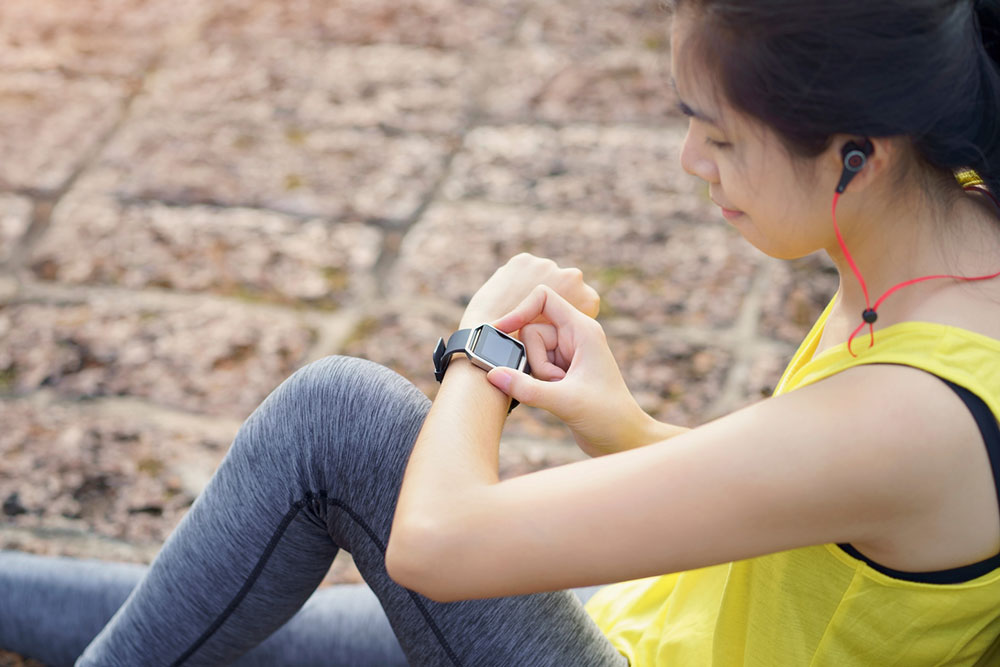Top 13 Samsung Watch Hacks to Try

The Samsung Galaxy Watch is one of the most sought-after smartwatch series, being equipped with features that one expects from a flagship wearable, including connectivity with a companion phone and monitoring health metrics like body composition and blood oxygen levels. Further, the latest Samsung watches run on Google’s Wear OS, enabling users to download apps seamlessly via the Play Store. Here, utilizing the following hacks can elevate the experience of using a Samsung Galaxy watch:
- Change the watch orientation
One can choose to wear a Samsung watch on their left or right wrist by changing the watch orientation. All one has to do is swipe top or bottom to go to Settings and follow this path: General Settings > Orientation > Wrist Preference and Key Position (already set on the right by default) > Toggle left for keys on the left side > Flip screen 180 degrees. - Modify the screen timeout interval
Samsung watches turn the screen off after 15 seconds of inactivity to save battery, requiring a quick PIN entry and swipe to use them again. To change the duration, one can move to Settings > Display and explore the following options:– Enable “Always on Display” or “Adaptive Brightness”
– Extend “Screen Timeout” to 1 minuteWith ths, one may not have to repeatedly twist the wrist after a moment of inactivity. While the changes may shorten the battery life, it improves the overall user experience. - Set up Google Assistant
Samsung watches have Bixby enabled, but to use Google Assistant, one has to download it or update it if already installed. To set it up, one can tap on Settings > Advanced Features > Customize Keys. It is possible to configure back and home keys for activating Google Assistant. - Experiment with watch faces
One can also personalize their Samsung Galaxy Watch5 or Galaxy Watch6 with custom watch faces. One can start by accessing the Galaxy Wearable app on the Android phone, syncing with the Samsung watch, and tapping on “Watch Faces”. Then, one can pick faces, add them to the Favorites, and customize aspects like Background, Complications (individual data fields), and Clock font. One can also use “Photos” or “Photo Sticker” to place a photograph as the background. - Change the order of quick settings
Samsung watches come with a “Quick Settings” option to perform tasks like muting the watch, adjusting the brightness manually, and accessing Wi-Fi. One can change the order in which these settings appear by first swiping top-down and finding the “Quick Settings” page, tapping the plus sign for edit mode, and long pressing toggles to reorder the settings. - Customize font style and size
One can also personalize their Galaxy smartwatch font by tapping on Settings > Display > Font. Here, one gets 6 fonts as default options—Rosemary, Cool Jazz, Choco, Cooky, Gothic Bold, and SamsungOne. One can also choose from four sizes and try the “Bold” option to improve readability. - Update watch apps without the phone
To access this feature, one can open the Play Store app on the watch and scroll down to “Manage Apps”. Then, one can view installed apps with updates and choose “Update All” or manually pick apps to update them individually. - Download music
This hack is extremely useful for those who do not carry their phone while working out. Here, one should YouTube Music on the Samsung watch, open the app, pick a playlist or song, and tap download. Alternatively, one can access Spotify music on the smartwatch. Here, one must open the Spotify app and sign up for Premium. Then, they should find a playlist, tap on “Download”, find Settings on the Spotify app, and click on “Go offline” for offline listening. - Use the watch as a trackpad
One can use their Galaxy Watch5 or Galaxy Watch6 as a trackpad by downloading the PPT Control App and selecting a device to control. For a MacBook, one has to link the watch via Bluetooth, open PPT Control, and select the device to start using the wearable as a trackpad. - Connect the watch to exercise machines
Samsung Galaxy Watch5 and Galaxy Watch6 both have the ability to wirelessly connect to compatible exercise equipment like treadmills. This lets users combine data from the onboard heart rate sensor and get a more comprehensive workout overview. Here, one should access the Samsung Health app on the watch, find Settings > Connected Services, and toggle the switch adjacent to Heart rate to transmit heart rate data. Alternatively, one can utilize their Profile information while using this mode to get calorie burn estimates. - Check the remaining battery life
One can assess the watch’s battery percentage with a downward swipe on the main screen. This will open the Quick Settings menu. Next, one can tap the cog icon to access “Comprehensive Settings” and move to “Battery”. In addition, Samsung offers a battery information screen to access valuable insights, like the approximate battery life (in days). Further, one can get a comparative analysis of battery longevity between the power-saving and the regular mode. While the battery usually lasts for a couple of days on a single charge, one can make it last longer by turning on the power-saving mode, which offers access to just the key features. Alternatively, the “Watch-only mode” is designed to limit other smartwatch functions and display only the time. - Modify goals
Whether one wants to modify daily step goals or their workout duration, one should first swipe left on the primary watch screen and identify the “Activity Tile” with a heart-shaped icon. Then, one can interact with the Tile by tapping on it and then scrolling till they find the “Set Targets” option. Here, one can adjust three primary parameters—activity calorie targets, steps, and activity time. - Activate automatic exercise detection
The Samsung Galaxy watch can even monitor exercises like indoor rowing, jogging, and stair stepping. To activate this feature, one can find the Samsung Health application and tap on Settings. Here, one can find “Auto-detect workouts” to access options to activate tracking for five different supported activities, coupled with location recording while engaging in these activities.


